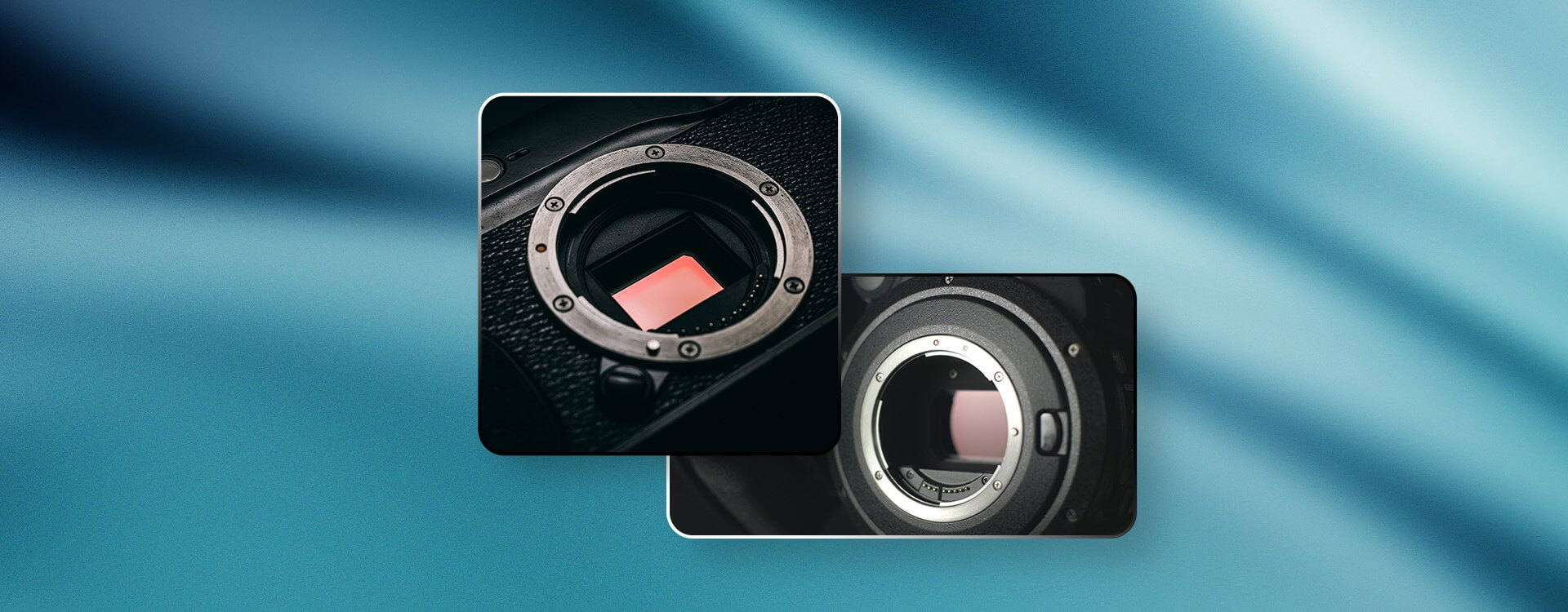Highlights
Table of Contents
Explore article topics
Learn about the different size sensors and their pros and cons. The most common are full-frame sensors, crop sensors, APC-S and MFTs.
Before buying a camera or renting it for a specific project, there are many aspects we should take into account. Lens mount, recording formats, size, ergonomics, features, compatibility, etc., all play an essential role when making a decision. However, maybe the most important is the camera sensor size. The camera’s image sensor will play a central role in determining the quality of your final image, so let’s see how a digital camera works.
How a digital camera works
When we hold a manual lens in our hands, it’s intuitive to see how it works. Light passes through the glass, and the aperture determines how much will pass during a certain amount of time (more with a bigger aperture, less with a smaller aperture).
In analog cameras, this light was printed in the actual film as a negative, and it was developed later in the lab. Film stock would determine the quality and size of the image (35mm, 16mm). Different film stocks would give different sensitivities, contrasts and resolutions.
In digital cameras, the film stock is replaced by the camera sensor. It works differently, but the principles remain the same.
What is a camera sensor?
A camera sensor is a device that captures light and transforms it into an electronic signal which will give us the final image. Every sensor is comprised of millions of pixels. Therefore, the quality of the final image will depend on 2 factors: the size of the sensor and the pixels’ number and size. Generally speaking, a full-frame sensor will produce a better image than a crop sensor, but we’ll get into that later.
What do camera sensor sizes mean?
image quality
If the bigger the sensor, the better the image, you can be thinking that the choice is an obvious one. However, it’s not so easy. Going big will compromise you in other aspects.
Depth of field
The sensor size will also affect the depth of field. The bigger the sensor, the shallower the depth of field given the same circumstances. For example, if you are filming a person, the background will be blurrier in a full-frame sensor than in a crop sensor, given the same aperture and field of view. You may think, ‘Perfect, that’s more cinematic,’ but that’s not true on many occasions.
Focus control
Depth of field is just another tool in your creative arsenal. If you want some background detail, you will need to stop down your aperture, meaning you will need more light for the scene or to increase your camera’s ISO. Also, with a super shallow depth of field, focus control can be a nightmare in some scenarios since you will have a few centimeters in focus unless you stop down. If an actor moves a bit in a close-up shot, you could lose focus. If you open your aperture to f/2 or f/2.8, you will have the actor’s eyes in focus and the ears out of focus. The final choice is yours, but it’s good to consider these things before choosing a camera.
Low light performance
Another difference is the low-light performance. Bigger sensors with bigger pixels capture more light, and the images in low light are cleaner and with fewer artifacts than with a smaller sensor. Even when you raise the ISO like crazy, you still get clean, usable images with full-frame sensor cameras. If you decide to go for a crop sensor, you will need faster lenses to compensate since raising the ISO can compromise image quality in many scenarios.
Camera size
Another aspect determined by the sensor size is the camera’s size -and price-. Bigger sensors usually require bigger and heavier processors, lenses, batteries, accessories, etc. As always, quality comes at a cost. On the other hand, crop sensors will require smaller lenses and cameras, making them more affordable and better for gun and run scenarios.
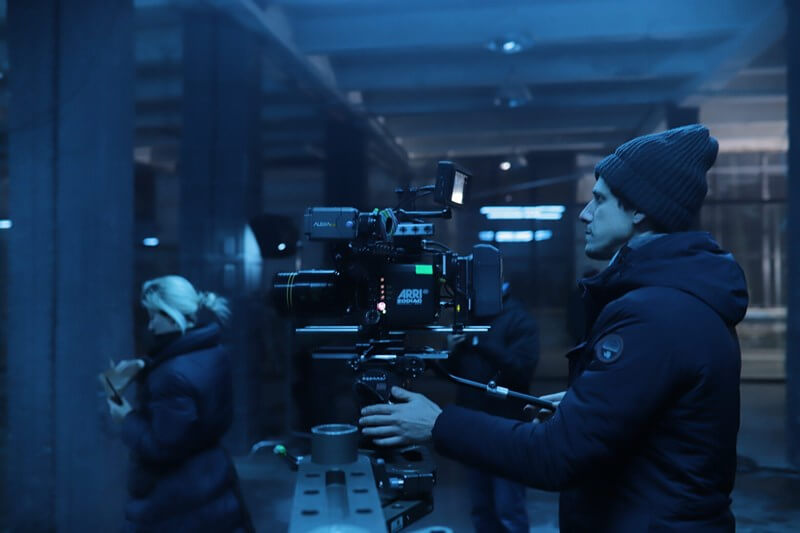
A bigger sensor means a bigger camera
Last but not least, the field of view. So let’s talk about the crop factor and its practical applications to understand this.
What is crop factor?
The angle of view is a huge factor when deciding on one camera or another, and it will change due to the crop factor. Crop factor means that when you are using a camera smaller than a full-frame one, you will get a ‘cropped’ image due to the smaller sensor size. Imagine filming a person for a full-body shot with a full-frame sensor camera. Now, put the same lens on an MFT camera from the same distance. You will probably get a medium waist shot.
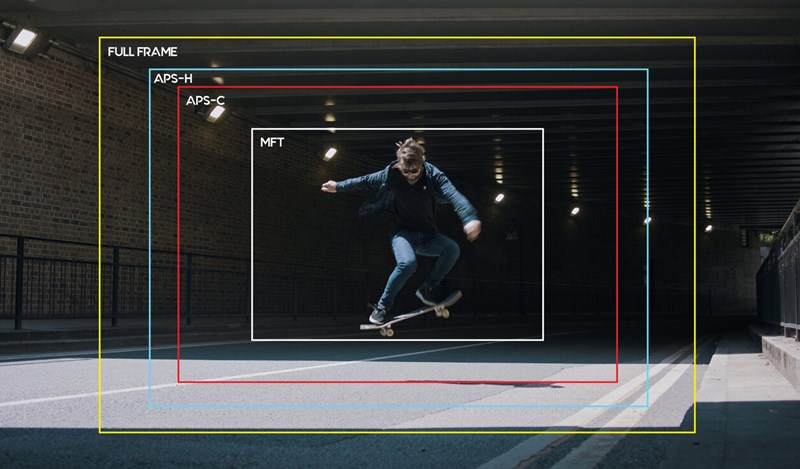
Why does this happen? Because an MFT sensor is half the size of a full-frame sensor if we measure the diagonal. This fact gives us a crop factor of 2. The result is a cropped or ‘zoomed’ image because the smaller sensor can’t cover the entire image the lens delivers.
How do you calculate crop factor?
The math is simple: if you have a 50mm lens in a full-frame sensor camera and want to know its equivalence in an MFT camera, multiply by 2 (100mm). So, your 50mm becomes a 100mm lens. In an APC-S camera with a crop factor of 1.5, your 50mm becomes 75mm.
Therefore, the same lens in a full-frame sensor will give you a wider angle of view than a crop sensor will. For example, a 28mm is considered a wide-angle lens in a full-frame camera, but it becomes a 56mm lens in an MFT camera.
Get unlimited royalty-free 4K footage
Is a bigger camera sensor better?
It depends on your needs. For example, if you shoot real estate videos and film tight spaces, you should consider a bigger sensor. But for shooting sports or nature, a 200mm lens becomes 400mm in an MFT system, which could be handy in those situations. Again, it depends on the project.
Main sensor sizes
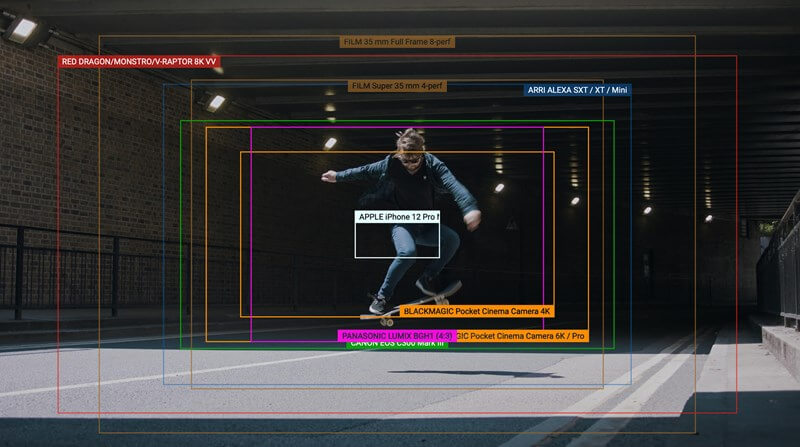
Now, let’s have a look at the typical sensor sizes, from big to small:
Full Frame (36x24mm)
The 35mm film equivalent. Superb image quality in general and better resolution than crop sensors. Better color rendition, especially in low light. More expensive cameras and gear.
Cameras: Canon R5, Canon R6, Sony PXW-FX9, Sony FX6, Sony FX3, RED MONSTRO.
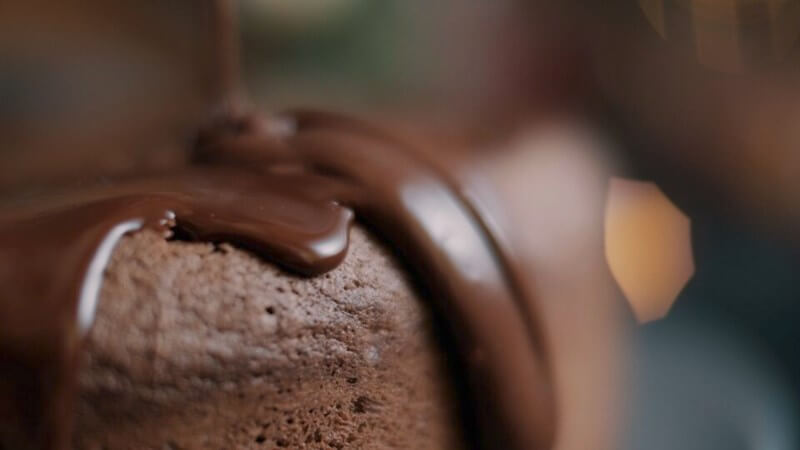
Full frame sensors at big apertures have a creamy bokeh
APS-H (1.3 crop factor)
With a small crop factor, all the characteristics of full-frame cameras apply. It almost retains all the image quality and resolution of full-frame cameras.
Cameras: Canon EOS-1D Mark IV, RED HELIUM 8K.
APS-C (approx. 1.5 crop).
The best of both worlds. The sensor size varies depending on the model. You still have fantastic image quality but at more affordable prices. Similar to the traditional cinema Super35 field of view. Lenses are smaller and cheaper than their full-frame counterparts.
On the cons: you won’t get that full-frame bokeh and, if you pixel-peep, the image will not be as pristine as with full-frame sensors, especially when you shoot in low light.
Cameras: Arri Alexa Mini, Fujifilm X-T4, Nikon D500, Canon EOS 90D, Sony a6600, Canon EOS M6 Mark II, Canon EOS C300 Mark III, BMPCC 6K, Blackmagic Ursa Mini Pro 12K.
MFT=Micro Four Thirds (2.0 crop)
Half the size of a full-frame sensor. Smaller cameras. Perfect for fast setups and run and gun scenarios. Mount compatible with many lenses. Better overall performance, less heating and longer battery life. On the cons: hard to get shallow depth of field and wide-angle shots. Worse performance in low light and higher ISOs.
Cameras: Panasonic GH5, GH5s, BMPCC 4K.
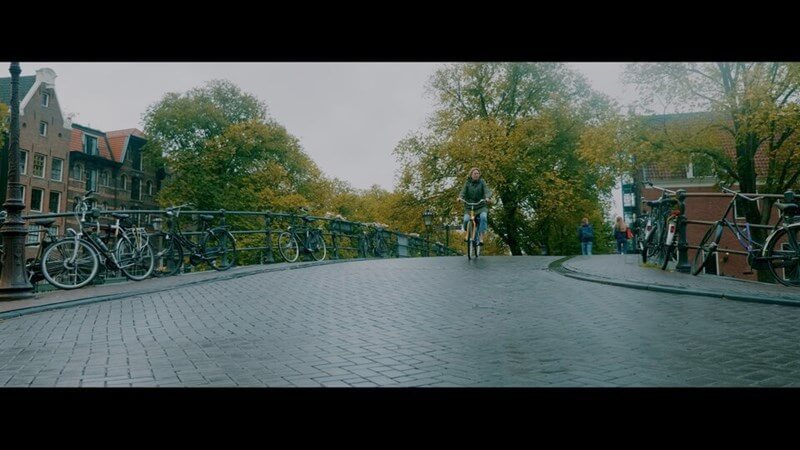
MFT gives you enough depth of field to put things in context with the background
Wrap up
As you see, sensor size is one of the most important things to consider when choosing a camera. There’s not a perfect sensor for every job, and each of them gives you advantages and disadvantages in different areas.
Finally, remember that a camera is not only its sensor. A bigger sensor with bigger pixels will produce a cleaner image with more dynamic range. Still, different camera processors will convert that image differently. In the end, a camera is an ecosystem, and other aspects such as ergonomics, recording formats, bit depth, features, etc., should be considered before deciding.
Jose Prada is a filmmaker, musician and writer based in the UK and Spain. He has won several awards with short films and commercials and has published filmmaking courses on different platforms. jrvisuals.co.uk, the production company he founded together with Rene Strgar contributes high-end stock footage to Artgrid.
Share this article
Did you find this article useful?
Related Posts
- By Josh Edwards
- 11 MIN READ
- By Jessica Peterson
- 10 MIN READ
Latest Posts
- 25 Apr
- By Josh Edwards
- 4 MIN READ
